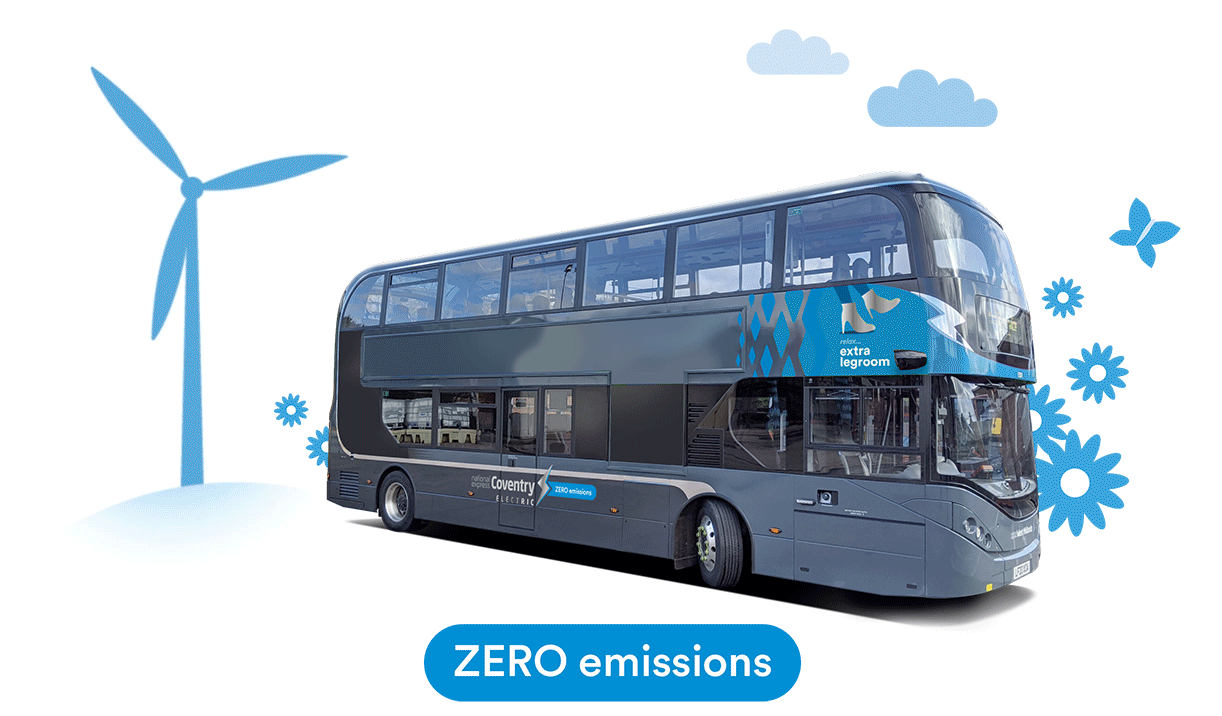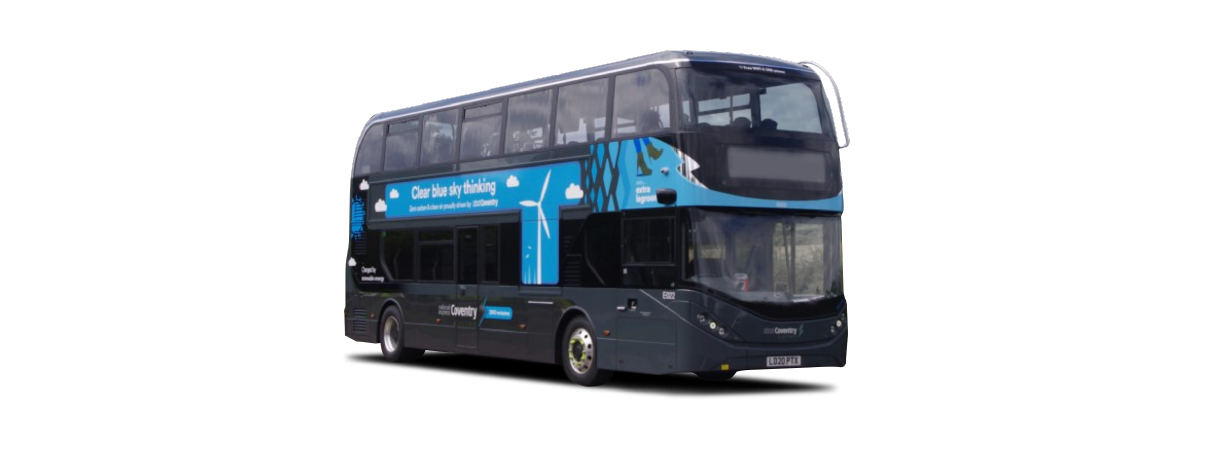
Zero emissions buses
Clean air, zero emissions buses

Zero emissions
Cleaner air
Extra legroom
Comfy seats onboard
USB power
Charge on the go
Stop announcements
So you don't miss your stop
CCTV
For safer travel
 Learn more about our buses
Learn more about our buses
The West Midlands aims to lead the green revolution and become a net zero carbon economy by 2041. We all have a key role to play in making that happen and we have already committed that our UK bus fleet will be fully zero emission much earlier, from 2030. By operating electric and hydrogen double deckers in service, we will learn which routes lend themselves to different bus types and what the mix of vehicles in our fleet should be going forward.
Our electric buses

All about electric
Electric buses
Built in Falkirk by Alexander Dennis, our electric buses have no engine and are battery powered.
We are really excited about Coventry becoming the UK’s first all-electric bus city. We launched 10 fully electric National Express Coventry buses into service during 2019 and we have introduced another 130 more in 2022. We will have hundreds more being brought to the city over the next few years so that our entire Coventry fleet becomes electric by 2025.
Electric virtual bus tour
Is electric better than diesel?
Electric vs diesel
So you are probably thinking, why are electric buses a whole lot better than normal, diesel fuelled buses. Let us explain:
- Our electric vehicles produce zero carbon emissions at the tailpipe and are powered by renewable ‘green’ energy - even the heaters run off the battery!
- Electric buses charge up in four hours, and can run for 220 kilometres in the winter, and 280 kilometres in the summer before needing another charge.
- Along with our hydrogen buses, electric is the next step to upgrading our buses to become fully zero emission from 2030.
Electric bus facts!
Did you know...
- Our drivers have to be specially trained to drive the electric buses because they behave differently to combustion engine-driven buses. The drivers have to learn to preserve the charge for as long as possible and extend the range of the vehicle.
- A shed-sized battery, a charging station for each bus and a new system for engineers to monitor the buses’ performance have been implemented at the garages.
- If you want to know if a bus is electric, look out for the number on the back of the vehicle. We literally reset the clock so the electric buses start from ‘001’ and carry the prefix ‘E’
- An electric bus can seat 25 passengers downstairs and 38 upstairs - so 63 in total. A Platinum but seats 30 downstairs and 43 upstairs - 73 in total. The difference is partly due to bus design layout (they are different models made by different bus manufacturers) but also partly because in an electric bus you need more room for battery cells to power it.
- An electric bus weighs almost 2 tonnes heavier than a standard diesel bus.
- In the first 12 months our 29 electric buses clocked over 850.000 miles and saved 1400 tonnes of carbon dioxide going out into the atmosphere.
Our National Express group vision is to become the UK’s most sustainable bus and coach company and our electric and hydrogen buses get us another step closer...
Like us on Facebook
See what we're up to, what's going on locally and get the latest service updates.
Like us on Facebook
Follow us on X
The best place to see the latest Coventry travel updates while on the go.
Follow us on XGet inspired on Instagram
See local sights and tag us in your bus pictures. Follow us to get involved!
Follow us on InstagramBack to top





